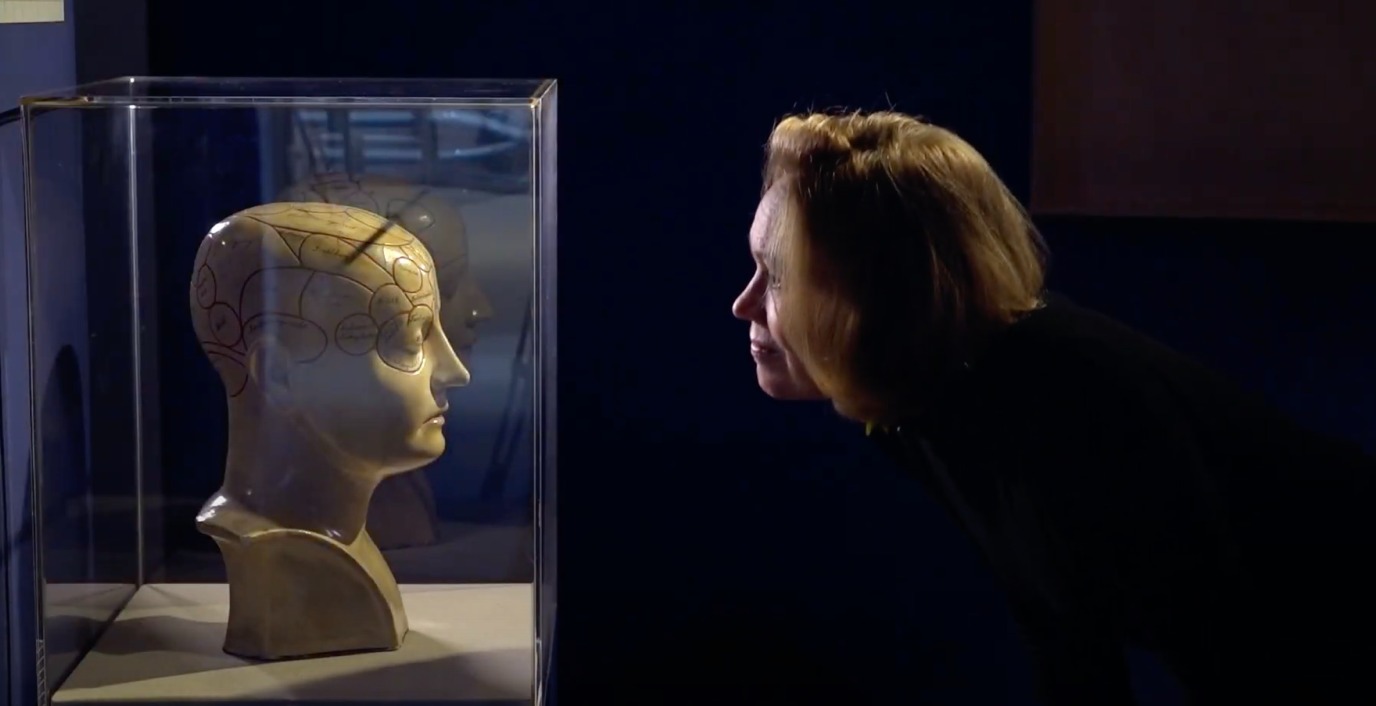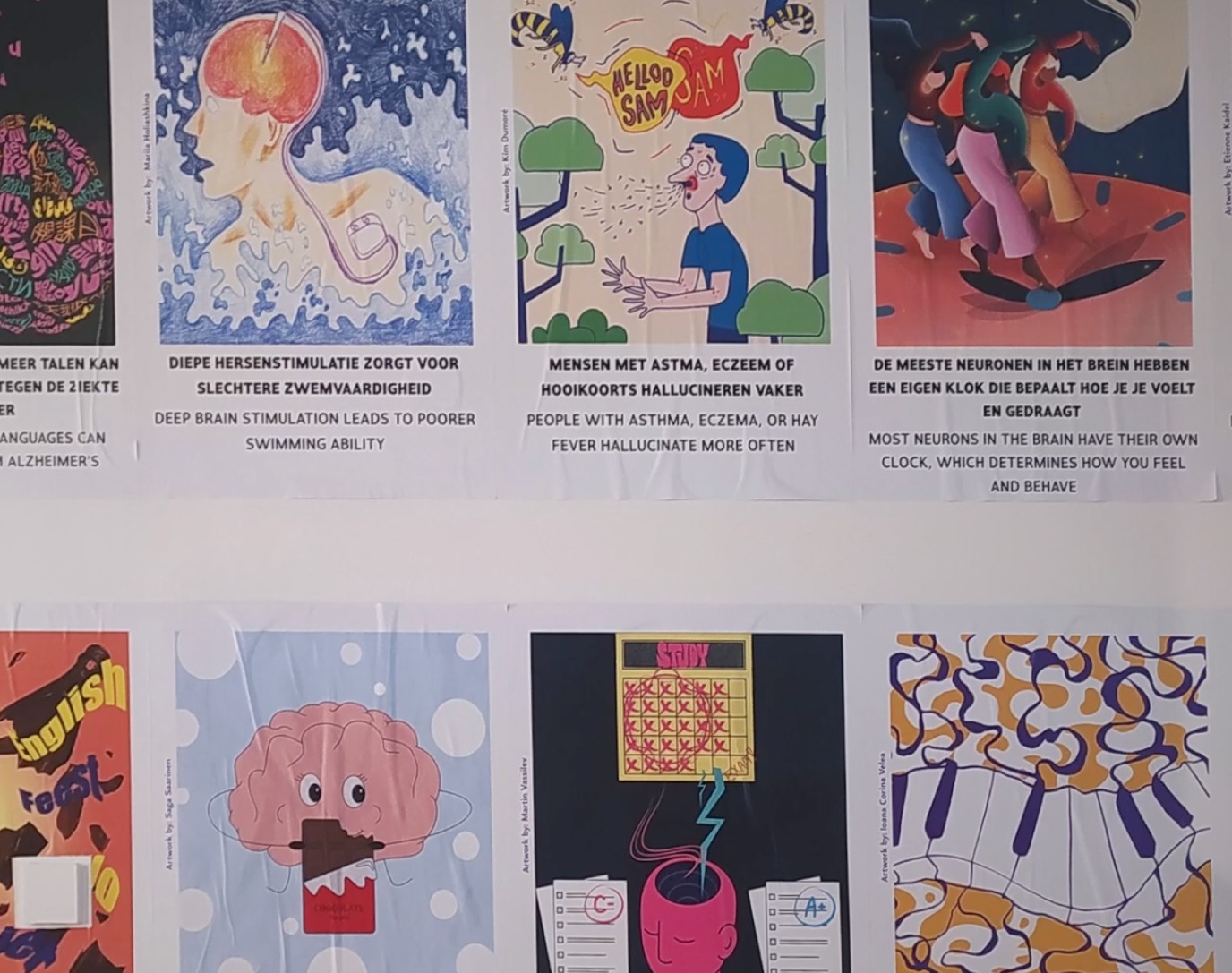An adventure in the brain

What is the gut-brain connection, how was it discovered that the brain does what it does, and how do games motivate you to perform better? In the exhibition Brainstorm, Iris Sommer and two other brain researchers from Groningen explain this and more.
Text: Bert Platzer / Photos: Reyer Boxem
Healthy brain
In this exhibition, the focus is on four brain functions: desiring, sensing, thinking, and doing. ‘Based on that, we explain how a healthy brain works,’ says Sommer, a Professor of Psychiatry who is involved in the exhibition. Together with fellow brain researchers Professor Marie-José van Tol and PhD student Franciska de Beer, she was responsible for the academic contribution. ‘For example, the messenger substance dopamine is featured. What happens when there is too little or too much dopamine? We also address common brain disorders: psychosis, depression, and Parkinson’s disease. We explain what happens in the brain with these disorders and how they influence desiring, sensing, thinking, and doing. These three brain disorders have a lot in common. A lack of motivation and leaning towards apathy can occur in all three disorders, just like hallucinations. Dopamine also plays a part there.’

Gaming industry
Using several interactive installations, visitors can learn about how the brain
functions in a fun way, for example, with the digital Whack-A-Mole game, in which a player needs to recognize and click on suddenly appearing images of the brain among other images on a touchscreen. After each round, the player is asked if they can go faster, and after three rounds, the function of dopamine as a reward system is explained. ‘We urge the player to do their best. In the gaming industry, this is done extremely successfully. They know exactly how to release dopamine in the brain. This creates a pleasant feeling after earning a reward in the game and it raises your score, and most importantly, the time you spend playing the game.’
Vulnerability
As instructive as it may be to slam a brain in this case, with this exhibition, Sommer specifically wants to stress that you should not do this, or let people do this, in your day-to-day life. ‘With this exhibition, we also want to teach people to respect their own brain and its vulnerability. The current young generation needs to realise that they may live to be 90 or 95 years old, and that our brains need to function even longer. Ageing is only fun if your brain also keeps functioning well. So, you need to take good care of your brain.

Binge drinking
While doing sports may be healthy, sports such as boxing and kick-boxing are not.
‘You brain is as soft as pudding. Although there is a skull to protect it, inside the skullit can bounce off against the sides rather forcefully. So, it’s best to choose a sport where your brain doesn't have to endure as much.’ The same applies to alcohol. ‘Binge drinking costs you IQ points. Generally, alcohol is bad for your brain, even if it’s just one drink a day.’
Anti-inflammatory diet
What should you be doing then? Eat healthy, for example. The gut-brain connection plays an important part in the brain’s health. ‘An anti-inflammatory diet in particular, with little meat, many fruits and vegetables, and many whole-grain products, calms the immune system of the brain. When the brain's immune system has little to do, the brain can recover better, certain growth factors are released, and the blood flow in the brain improves.’
Architecture of brain tissue
In the distant past, ironically, blows to the head led to important insights into the
brain, something the exhibition also touches upon. ‘The ancient Egyptians and Greeksthought that the brain was some sort of filling or shock absorber for the skull. It was only much later that people discovered how important the brain actually is. In the nineteenth century, the French doctor Paul Pierre Broca was one of the first to associate a certain area in the front part of the brain with a certain function. If this part is damaged, you can no longer speak well. This part was later called Broca’s area. In the same period, the German doctor Wernicke found a similar area. If that area is damaged, you can still pronounce words, but you are unable to comprehend their meaning. And in 1909, the German neurologist Korbinian Brodmann created a brain map that is still being used today, with 52 areas based on the architecture of brain tissue.’

Poster wall
In a sense, it is a coincidence that the exhibition takes place. The catalyst was the
poster wall in the back of the exposition room. ‘Two years ago, we started “Science on Wednesday”— on Wednesdays, we would post an illustration, painting, or animation made by a student of the Minerva Academy, depicting a finding of a brain scientist of the University. By now, we have over fifty of these, and we asked the University Museum if we could exhibit the pieces of art there. They really liked it, but they also liked the subject in general and wanted to create an exhibition about it.
Uncharted waters
That was grist to the mill for Sommer and her colleagues. ‘Mariska de Bone is the key figure in this process, she is the creative mind behind the exhibition. She can
transform scientific information into something exciting and fascinating.’ And that is exactly how Sommer, after 25 years of research, still sees the brain. ‘The brain is still mostly uncharted waters. We may only know half of everything that happens in the brain. It continues to fascinate me how the brain can perform all these different functions. It’s a puzzle that I still enjoy trying to crack.’
More information
-
The exhibition Brainstorm: The Human Brain & Research in Groningen is still running until February 2026 at the University Museum Groningen. You can find the Science on Wednesday posts here.
-
Iris Sommer (1970) studied medicine at VU Amsterdam and received her PhD with distinction from Utrecht University. As a professor and a psychiatrist, she was associated with the University Medical Center Utrecht. As from 2017, Sommer is a Professor of Psychiatry at the UMCG. She wrote six popular science books about the brain.
More news
-
17 November 2025
Artificial intelligence in healthcare
-
04 November 2025
AI Factory in Groningen advances digital sovereignty
-
03 November 2025
Menopause in perspective: How the media influences our perception
